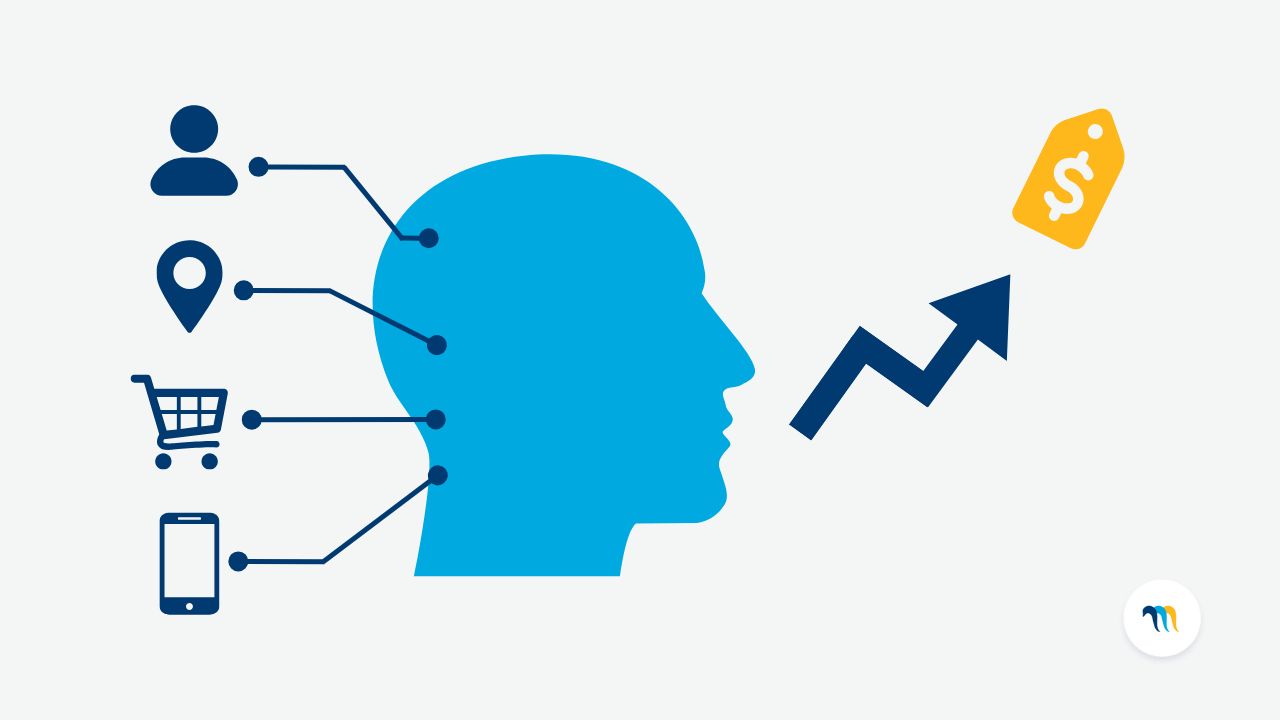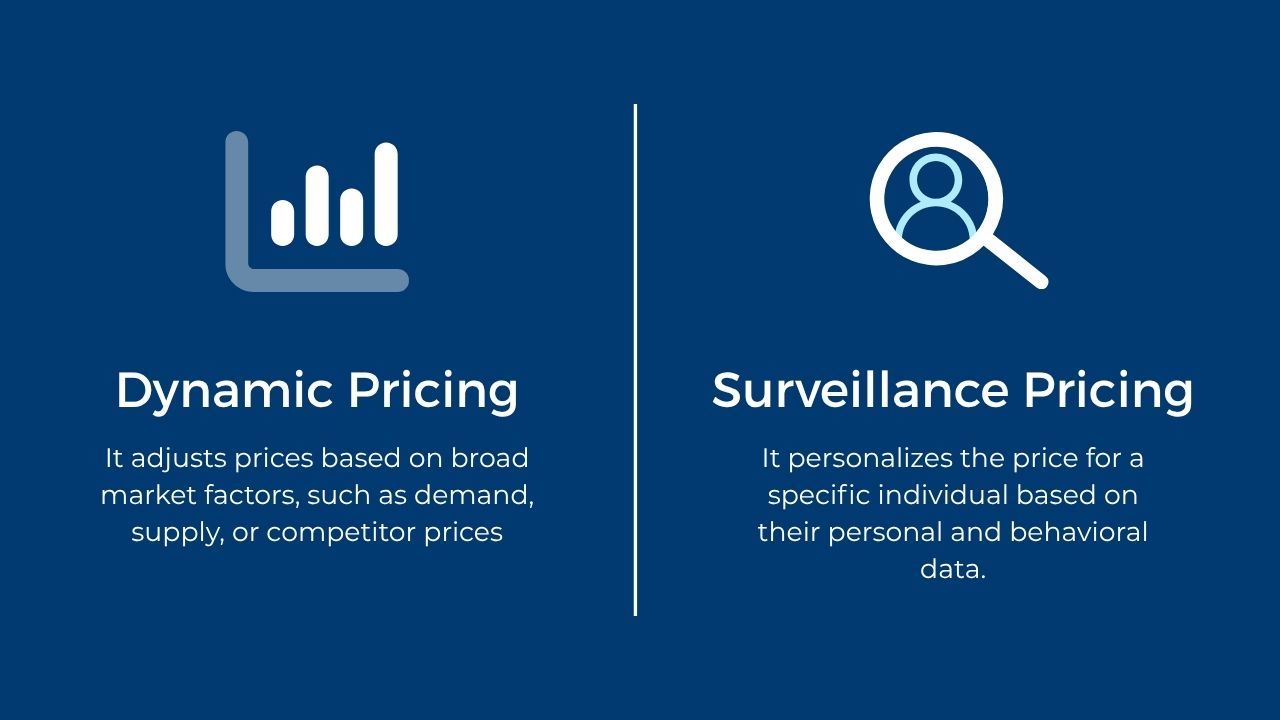

The term "Surveillance Pricing" might conjure images of corporate espionage and price manipulation. However, this initial perception hides one of the most sophisticated and powerful strategies in modern retail. Far from being an opaque practice, it is the natural evolution of personalization: a way to use data to offer the right price to the right customer at the right time. In this article, we'll demystify this concept and show you how to transform "surveillance" into granular market intelligence that drives your profitability.
Table of Content
- What Really Is Surveillance Pricing?
- How Does This Personalized Pricing Strategy Work?
- Types of Surveillance Pricing and Practical Examples
- The Real Impact of Surveillance Pricing on Your Business
- Challenges and Ethical Considerations in Implementation
- How to Implement a Smart Pricing Strategy
- Frequently Asked Questions about Surveillance Pricing (FAQs)
- Conclusion: From One-Size-Fits-All to Intelligent Personalization
What Really Is Surveillance Pricing?
Surveillance Pricing is an advanced pricing strategy that adjusts the cost of a product or service for each consumer based on a wide range of data about their behavior, context, and demographic profile. In essence, it is a form of hyper-personalized price discrimination where the goal isn't to "spy," but to deeply understand the needs and willingness to pay of each customer segment.
A common mistake is to associate it solely with unjustified price hikes. In reality, it's a tool for optimizing the entire pricing strategy. It allows you to offer discounts to new customers to encourage their first purchase, special prices to loyal users, or adjust rates based on demand in a specific location—all automatically.
"Well-executed Surveillance Pricing isn't about spying on the customer, but about understanding their context to offer them fairer, more relevant value. It's the shift from a mass pricing strategy to a surgically precise one."
- Antonio Tomás, CEO of Minderest.
How Does This Personalized Pricing Strategy Work?
Implementing Surveillance Pricing relies on a company's ability to collect, analyze, and act on large volumes of data almost instantaneously. The process can be broken down into three key phases:
- Data Collection: Companies gather information from multiple sources. This includes site browsing history (which products are viewed, for how long), purchase history (frequency, average order value), demographic data (if available), geographic location (from country to zip code), and technical data like the device being used.
- Real-Time Segmentation: Machine learning algorithms process this data to classify each user into a micro-segment. For example, a system might identify a "high-value loyal customer," a "price-sensitive bargain hunter," or a "new visitor from a high-end device."
- Automated Price Adjustment: Once the user is segmented, the pricing system applies a predefined business rule and adjusts the displayed price. This action is automatic and can happen in milliseconds, ensuring that each customer sees a price optimized for their profile.
What is Surveillance Pricing? It is a dynamic and personalized pricing strategy that uses consumer data (such as browsing history, location, device, or past purchases) to set individual prices in real time. The goal is to maximize revenue and offer relevance by presenting the most appropriate price for each user at a specific moment.
Types of Surveillance Pricing and Practical Examples
This strategy manifests in various forms, adapting to the context and available data. Below, we explore two of the most common applications in the retail sector.
Data-Driven Geographic Pricing
A customer's location is one of the most powerful indicators of their purchasing power and willingness to pay. Surveillance Pricing takes a geographic pricing strategy to the next level, allowing for adjustments not just by country, but by region or even by zip code. For example, a retailer might offer slightly higher prices in areas with a high per capita income or launch exclusive promotions in areas with a high density of competitors. The ability to monitor prices by postal code is fundamental to executing this tactic with precision.
User Behavior-Based Pricing
A user's past and present behavior is a reliable predictor of their future actions. Some examples of personalized pricing based on behavior include:
- New vs. Returning Users: Offering an aggressive discount coupon to a new visitor to break the first-purchase barrier, while showing standard prices to returning customers who already trust the brand.
- Purchase History: A customer who regularly buys high-end products may be less price-sensitive than one who only buys during sales events. The system can adjust prices to protect the margin in the first case and to incentivize conversion in the second.
- Device Used: A user browsing from the latest iPhone model may, statistically, have greater purchasing power than someone using an older computer. Some companies use this data point as a signal to adjust their offers.
These tactics are examples of price discrimination that, thanks to technology, can be applied on a massive scale.
- Discover how advanced price monitoring can power your strategy. Learn about the Competitor Price Monitoring tool from Minderest.
The Real Impact of Surveillance Pricing on Your Business
Beyond theory, implementing data-driven pricing strategies has a direct and measurable impact on business results. A recent study by the U.S. Federal Trade Commission (FTC) on these tools revealed that companies using them report revenue growth of 2% to 5% and an increase in profit margins of 1% to 4%.
This performance is due to several reasons:
- Revenue Maximization: By aligning prices with the perceived value of each segment, companies avoid leaving money on the table with customers willing to pay more, while also capturing sales from more price-sensitive customers.
- Competitive Agility: It allows for instant reactions to competitors' moves and changing market conditions, protecting market share.
- Operational Efficiency: Automation reduces the need for manual adjustments, freeing up pricing teams to focus on strategy rather than execution.
Ultimately, this strategy is the highest expression of data-driven decision-making applied to pricing, transforming a traditionally reactive area into a proactive engine for growth.
Challenges and Ethical Considerations in Implementation
Despite its benefits, Surveillance Pricing is not without challenges. The main hurdle is customer perception. If consumers feel that prices are unfair, arbitrary, or that their privacy is being violated, the damage to the brand's reputation can be severe.
To mitigate these risks, it is crucial to:
- Be Transparent: Be clear in your privacy policies about what data is collected and how it is used.
- Provide Value: Personalization should be perceived as a benefit. Discounts for loyal customers or relevant offers are well-received; seemingly random price increases are not.
- Be Consistent: Avoid extreme price differences for the same product in a short period of time to prevent frustration.
The goal is to strike a balance between optimizing profitability and maintaining customer trust and loyalty.
How to Implement a Smart Pricing Strategy
Implementing Surveillance Pricing effectively is impossible without the right technology. It requires a robust platform capable of processing millions of data points in real time and executing complex business rules automatically.
The cornerstone of any such strategy is comprehensive and accurate price monitoring. Without a deep understanding of competitor prices, market stock levels, and demand trends, any attempt at personalization is based on guesswork. A dynamic pricing tool for e-commerce like the one from Reactev provides the market intelligence needed to ensure that every adjusted price is both competitive and strategic.

Frequently Asked Questions about Surveillance Pricing (FAQs)
Is Surveillance Pricing legal?
Yes, it is generally legal, as long as it does not engage in discrimination against protected groups and complies with data protection regulations like GDPR in Europe or CCPA/CPRA in the US. The key is transparency in the collection and use of personal data.
What is the difference between Dynamic Pricing and Surveillance Pricing?
Dynamic Pricing adjusts prices based on broad market factors, such as demand, supply, or competitor prices. Surveillance Pricing is a more advanced and granular form of Dynamic Pricing that personalizes the price for a specific individual based on their personal and behavioral data.
Do I need to be a large company to use this strategy?
This strategy is most effective for large or enterprise-level companies that handle high volumes of data and transactions. However, the principles of segmentation and personalization can be applied on a smaller scale by any business looking to optimize its prices.
Conclusion: From One-Size-Fits-All to Intelligent Personalization
Surveillance Pricing represents a paradigm shift in retail. We have moved from a "one price for all" model to a future where every customer interaction is an opportunity to offer personalized value. Far from being a surveillance tactic, it is a strategic market intelligence tool that, when used ethically and transparently, benefits both the company and the consumer.
For large companies in the retail sector, mastering this strategy is no longer an option but a necessity to compete in an increasingly digitized and data-driven market. Intelligent personalization is the path to greater profitability and a stronger customer relationship.
Are you ready to take your pricing strategy to the next level? Monitor your competitors and the market with maximum precision. Request a Minderest demo.
Find out how Minderest can take your business to the next level.
Contact our pricing experts to see the platform in action.
Related Articles

AI Agents and Holiday Season: How to Adapt Your Pricing Strategy
Holiday season planning used to revolve around creative campaigns, emotional storytelling, and optimizing the user experience. However, a silent revolution is changing the rules of the game. The rise...
AI in E-commerce: The Revolution of Google AI Mode and ChatGPT Shopping
Artificial intelligence is rapidly reshaping e-commerce. With the launch of new tools by Google and OpenAI, the online product discovery, comparison, and purchasing process has entered a new era. ...